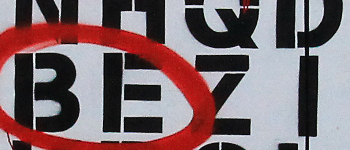With half the writing community currently engaged in wordcount battles, there’s an appropriately combative note to this week’s round up. The structure war rumbles on. An overused word is singled out for extermination, and we learn that doing nothing very much as our doom approaches is actually an effective tactic. Meanwhile back at base, TV and childrens’ books throw some light on the writing process
Larry Brooks got cross this week. He waxed apoplectic about a piece in the Wall Street Journal. The article, How to Write a Great Novel, is certainly badly headlined. Unless, that is, knowing that Hilary Mantel edits in the shower might help you achieve writing greatness. Once you get past the headline, the piece itself is an entertaining peek at the tricks some successful writers play on themselves in order to get the right words down on the page.
Personally, light though it is, I love this stuff. It makes me feel I’m just a ploy away from decent writing. I’ve collected little tales of the sort for years. Trollope used to chain himself to his desk. Douglas Adams could never write unless he was the wrong side of several deadlines. He also had a fondness for long baths.
Brooks is affronted by the entire article, though:
Several write their stories in longhand before setting themselves in front of a keyboard, which, in my view, is about as inspired and effective as commuting to work in Manhattan via tricycle.
One guy wouldn’t reveal his top secret writing process at all, perhaps fearing he’d look as completely mundane and uninspiring as the rest of these authors.
Another dispatch from the structure war. Take that, wishy-washy organic writers with your misguided reliance on muse, inspiration, intuition and other unscientific methods!
Jodi Cleghorn at Write Anything declared her own war on the word ‘that’ — so that’s yet another thing to look out for at micro-edit time.
Jennifer Blanchard at Procrastinating Writers suggested you read it out loud, a fantastic way of tuning flow and catching clumsy prose.
Nathan Brandsford had a busy week. He laid down the basics of a good query letter — get the big stuff right and don’t obsess about the details. In another post he provided an agent’s-eye take on literary comparison. Is your novel Harry Potter meets The Naked Lunch? If so, should you use that useful shorthand in your query letter?
When is it a good idea to have your characters fiddle around inconsequentially? When it’s that very failure to engage with some impending crisis that raises the tension, as Davin Malasarn explained in a fascinating piece on tension and counterpoint at The Literary Lab.
Darcy Pattison used two childrens’ picture books to illustrate narrative arcs: First My Friend, Rabbit, by Eric Rohmann and then A Splendid Friend, Indeed by Suzanne Bloom.
Roz Morris at Dirty White Candy discussed TV pilots and some character/tension shortfalls that some shows exhibit once the high drama of the pilot is dispensed with. This boils down to resolving conflict too soon, so that individual episodes become simple exercises in puzzle solving.
It could be worse, we could still do that trick where the characters get together and all have a little laugh in a post-advert coda just to prove that everything was all sorted out and there’s no nasty unresolved tension. Yech.





